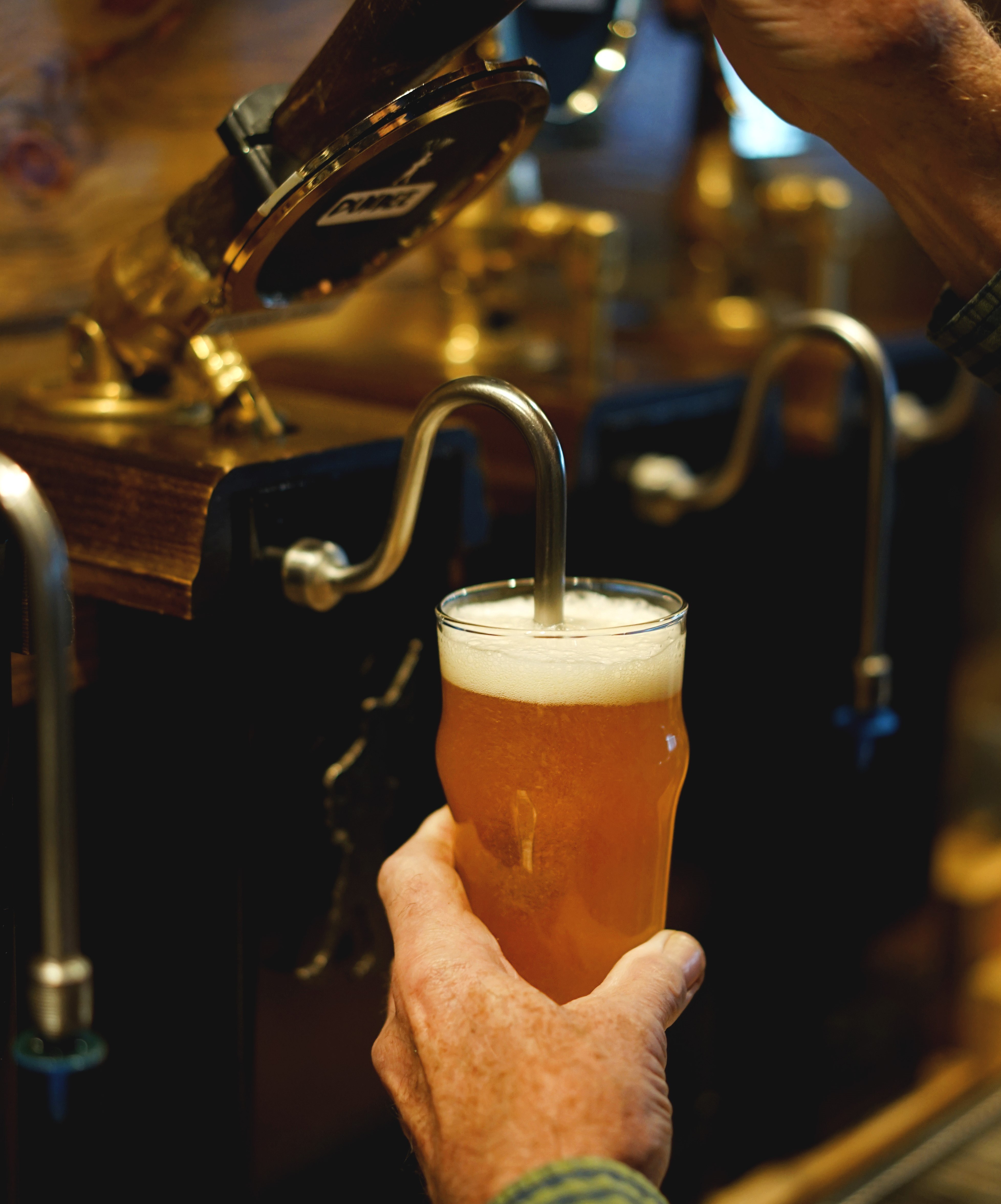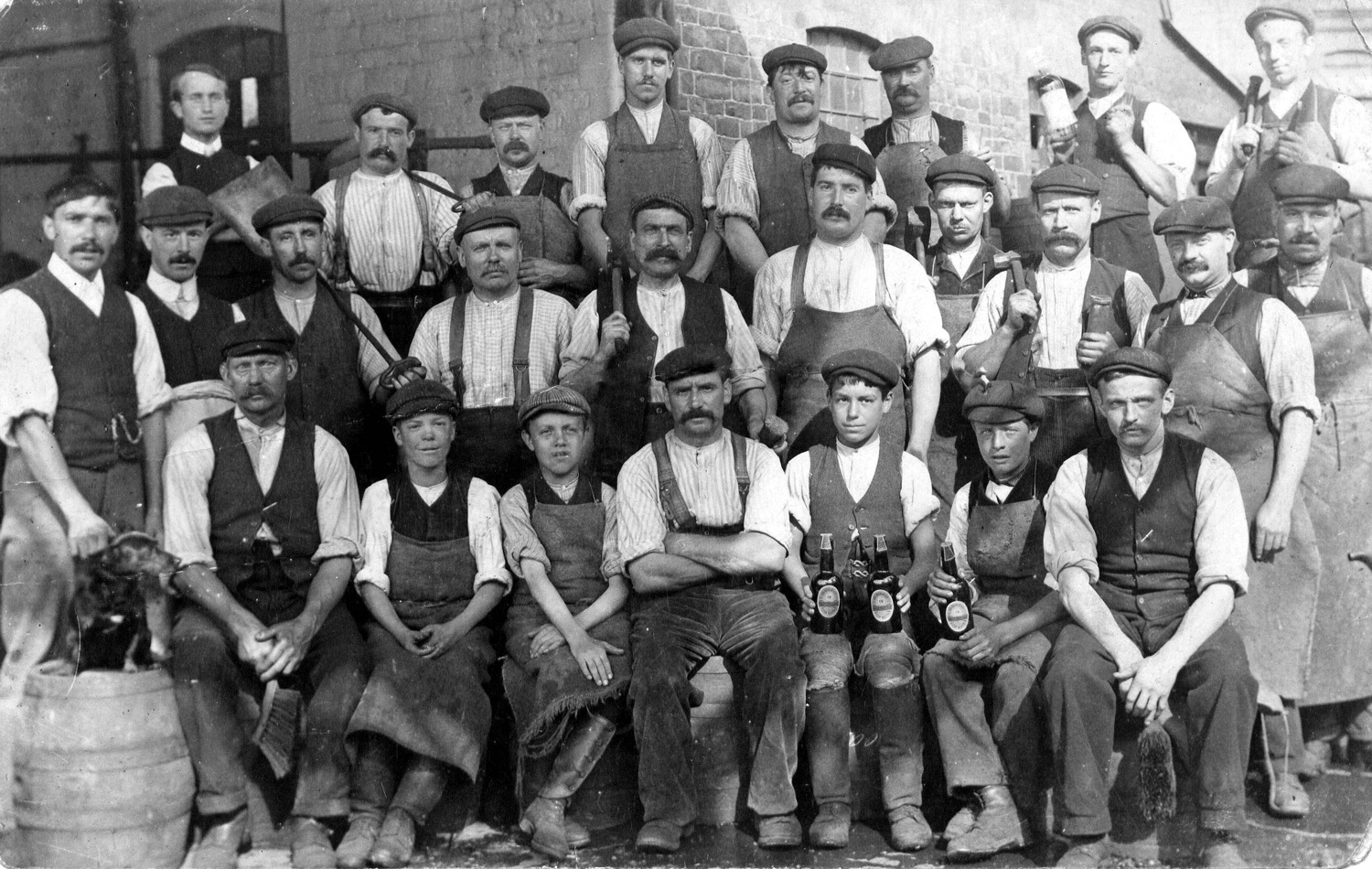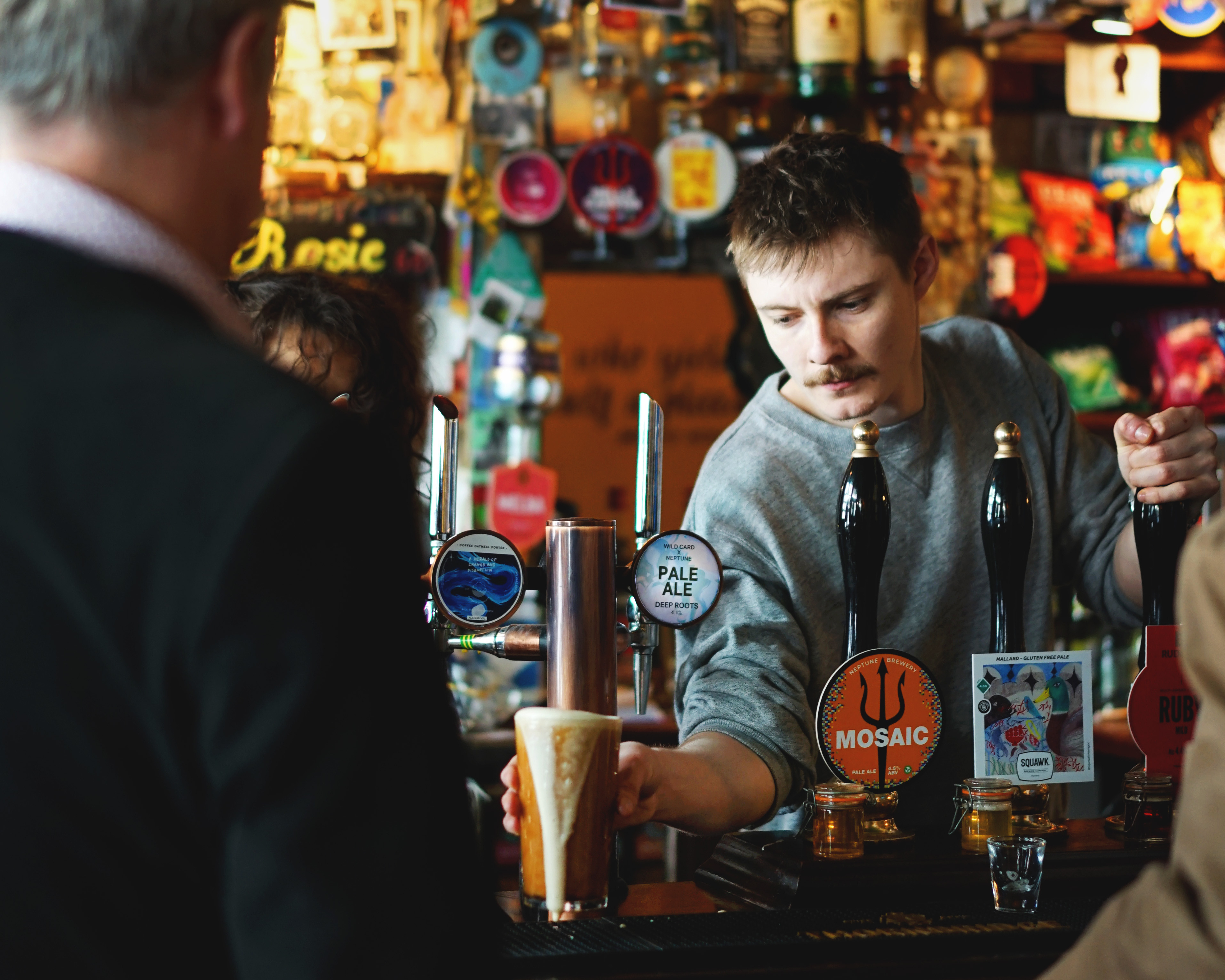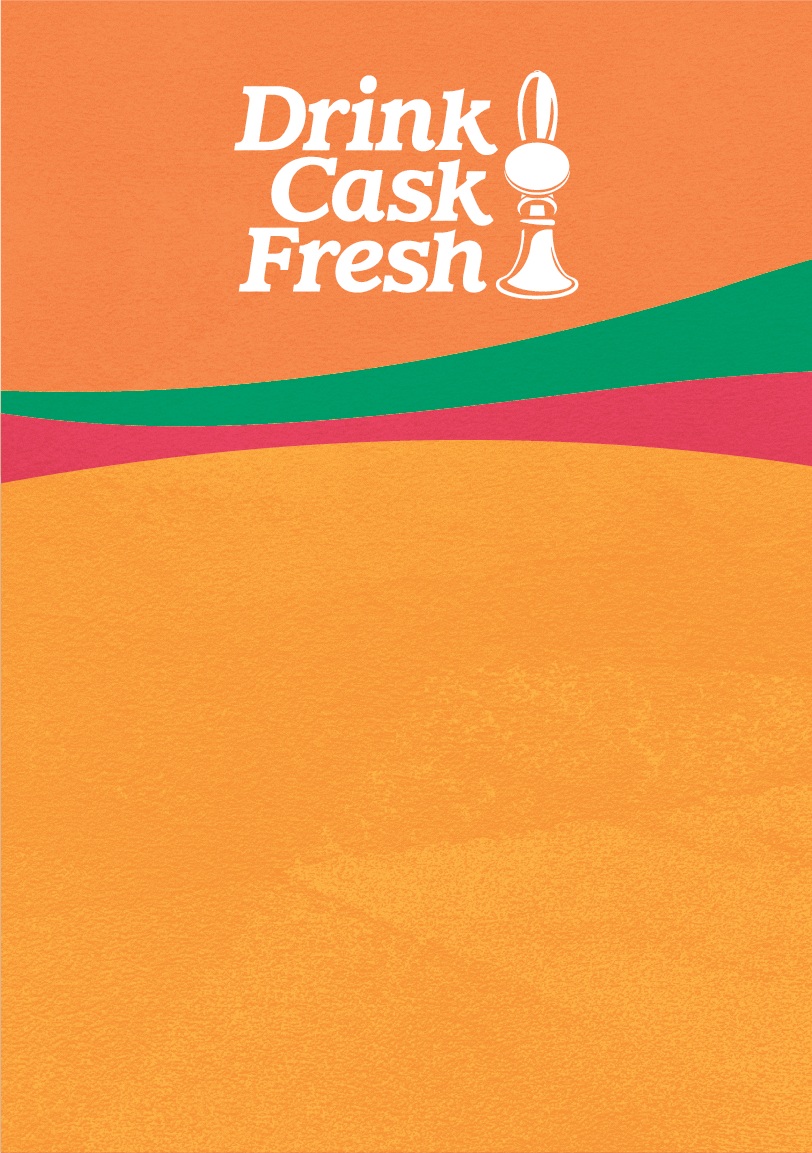What is Cask Fresh

Whether you know it as real ale, cask ale or cask fresh beer, this quintessentially British beer is part of what makes a proper pub. But what actually is it and how can you recognise it?
Cask ale is essentially an unfiltered, unpasteurised ‘live’ beer, brewed from four magic ingredients: water, barley, hops and yeast.
Only when the beer is judged to be ready by the master brewer is it delivered to the pub. The pub’s cellar person takes over and the 7 steps to get the cask fresh beer ready for drinking, begin.
After being hand finished in the cellar, the beer is hand pulled from the cask in the cellar to the glass. The tall hand pulls you see on the bar are engineered to create the pressure that draws a pint of beer up from the cellar in just 3 or 4 pulls.

The beer is served at the temperature of the cellar (between a cool 11-13 degrees), without the addition of carbon dioxide. The gentle carbonation is naturally produced as the beer conditions and matures in the cask.
This all results in a flavourful beer that’s often but not always clear (or bright as brewers call it), lightly carbonated, served cool, with a good head. There’s a huge range of beer styles to dive into and explore. And with such a variety, it’s often easier and tastier to pair beer with food than wine, believe it or not.
But how do you know you’re getting a good pint, how can you tell the difference? Read our short guide on how to taste cask fresh beer.
Origin of Cask Beer
So now that you’re enjoying a great pint in a great pub, let’s talk about where, why and how this magnificent drink was produced in the first place.
Beer’s rich history dates back thousands of years. From approx. 3800 years ago, the Hymn to Ninkasi from ancient Sumeria is believed to be the first written record of brewing. This recipe for a drink made of cereal grains and water, fermented with yeast didn‘t change all that much until around 1100, when the monks of the middle ages started adding hops for flavour. It also turned out that hops have antimicrobial properties. And when all the ingredients were boiled, beer became a safer drink than the water sources that could be contaminated and cause disease. Back then, everybody, men, women and children, would all drink weak beer, because it was safer than water!
Fast forward a few hundred years and cask beer as we know it today is largely a product of late 19th-century innovation. Where beer had been brewed mainly for local drinking, by small brewers, much of it was drunk as soon as it had finished fermenting. But hops also have stabilising properties so beer could now be brewed that would keep.

Jump ahead to the 1930s and beer is first put into cans. Brewers also start to pasteurise beer, carbonate it and put it into kegs to create a long shelf-life product.
In 1971 The Campaign for Real Ale was formed to protect and develop traditionally brewed British ales, as they were enjoyed alongside the long life, industrially produced national and international brands.
Now, in 2023, drinkers have more choices of beer than ever before. Amongst that, cask ale is, without a doubt, the freshest beer on the bar. In many respects, it’s the original craft ale, often brewed locally, by people with a deep passion for what they do. Best of all, it’s only available in the pub.

Want to learn more about the beer language? click below to check out some of the words
